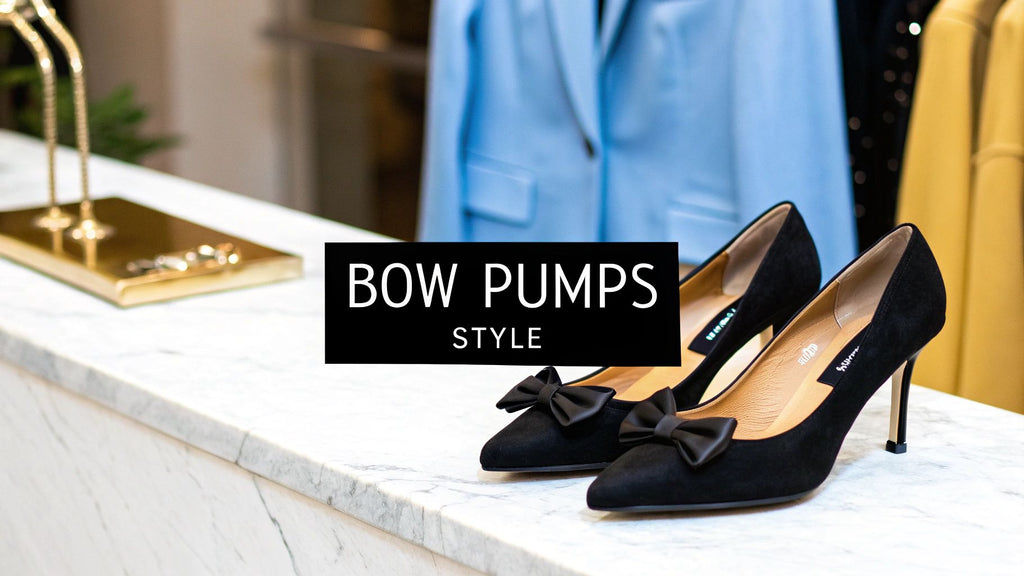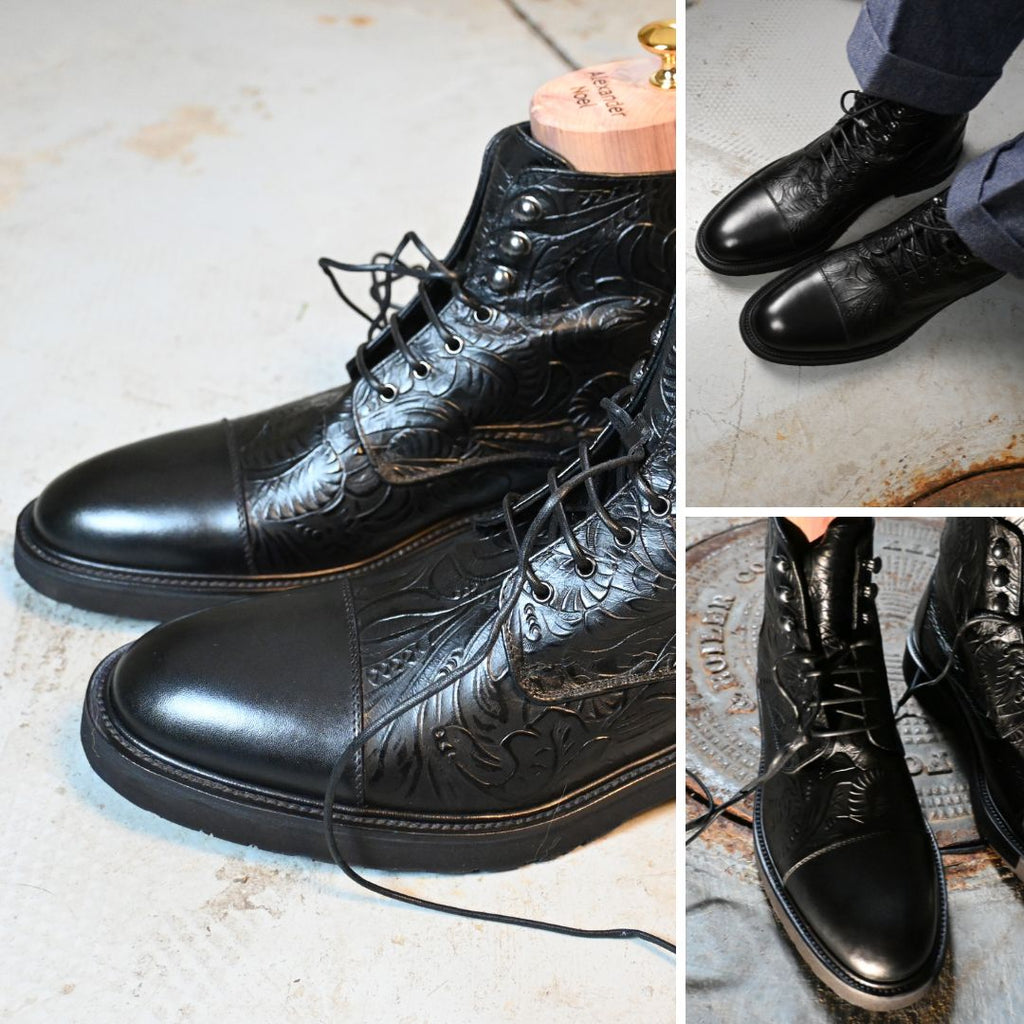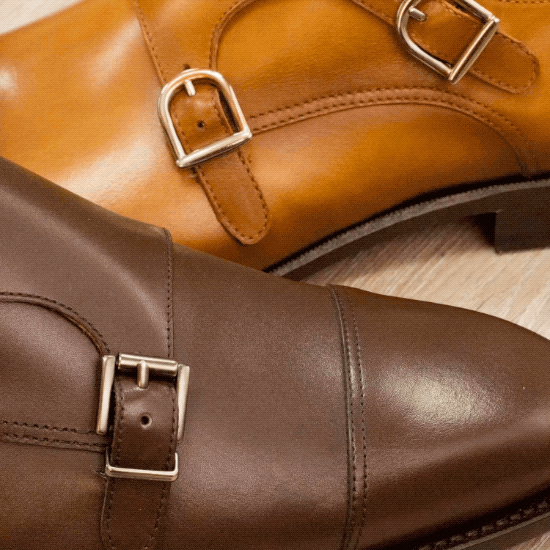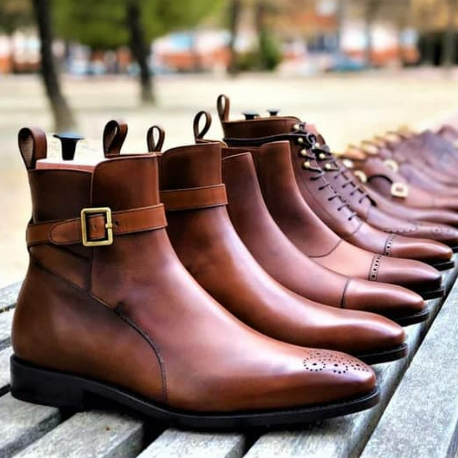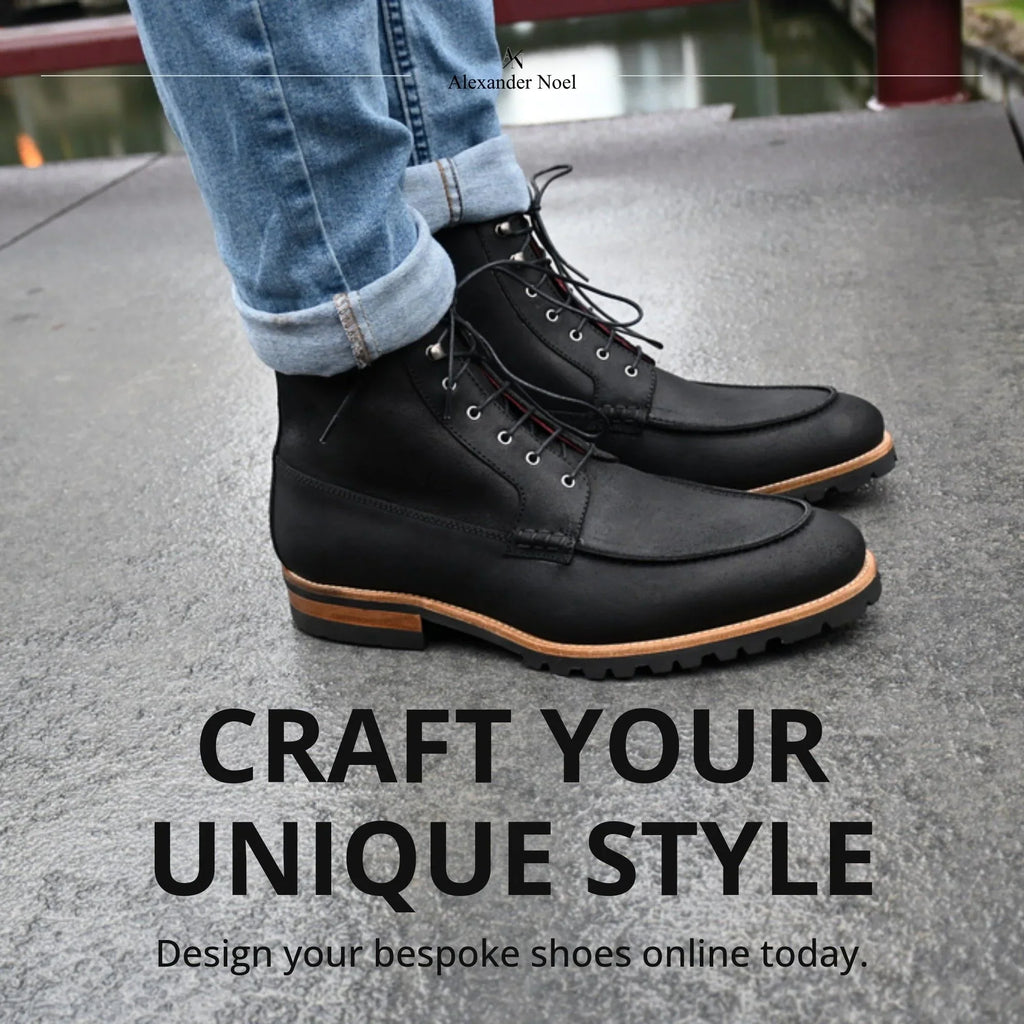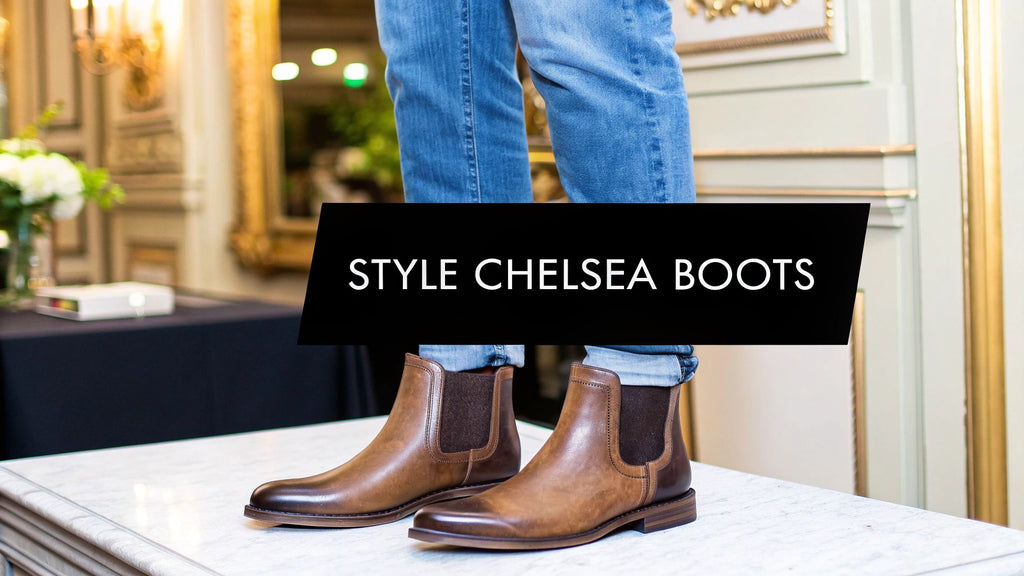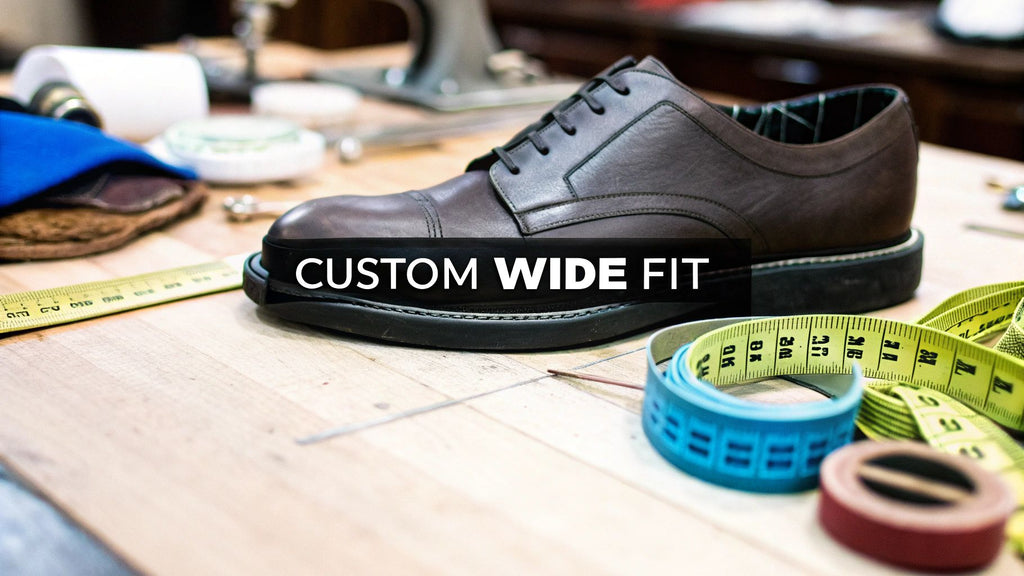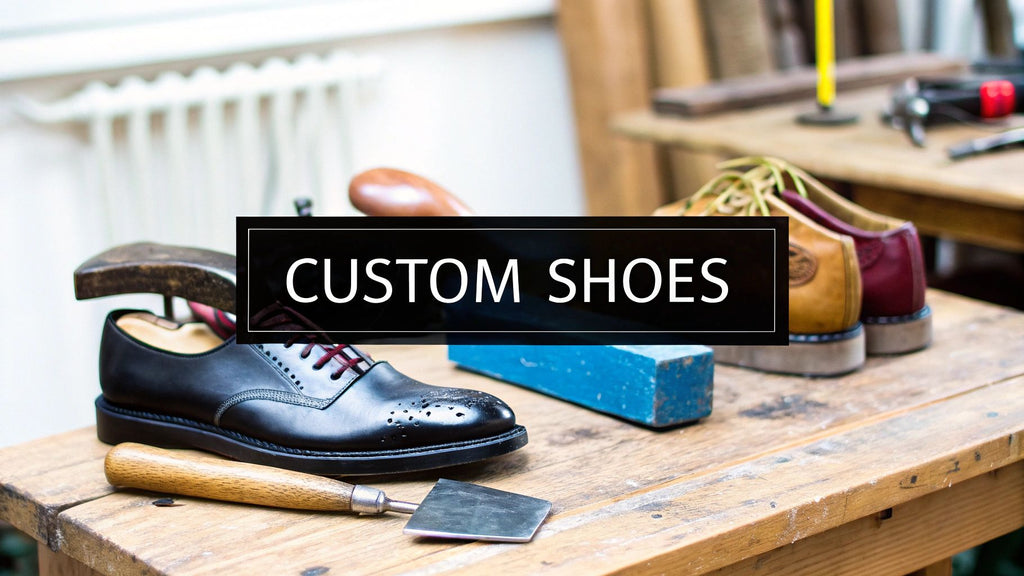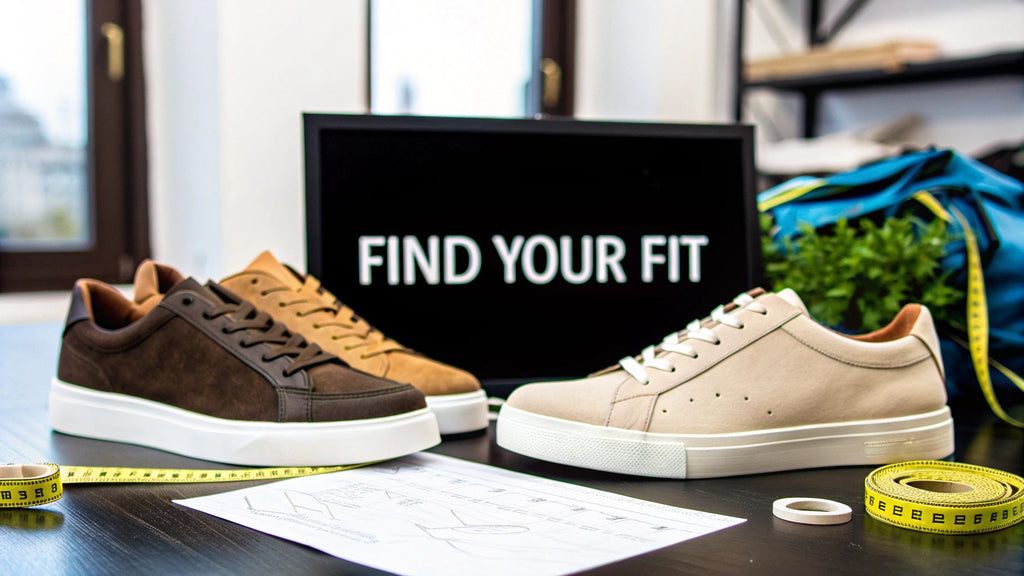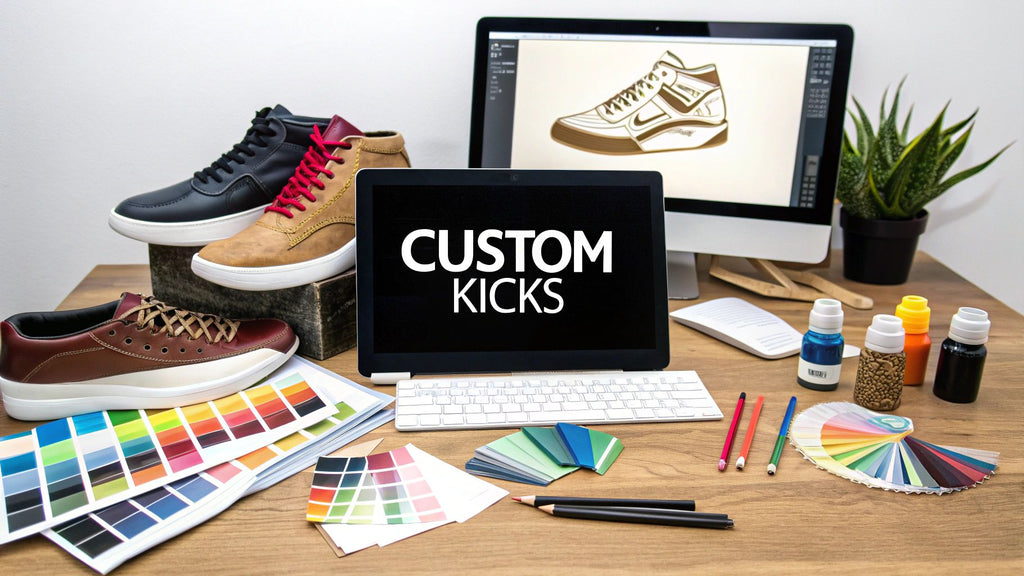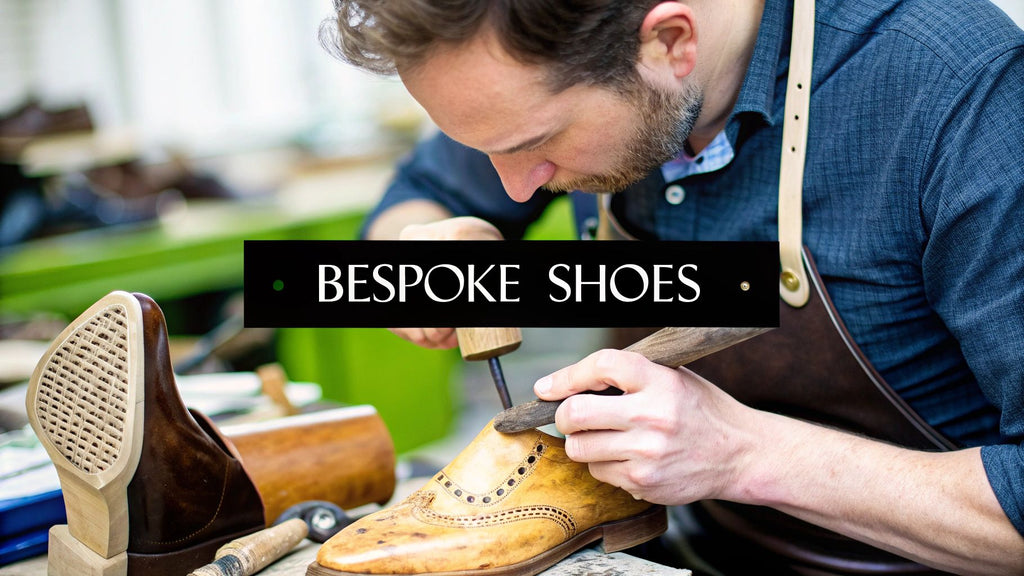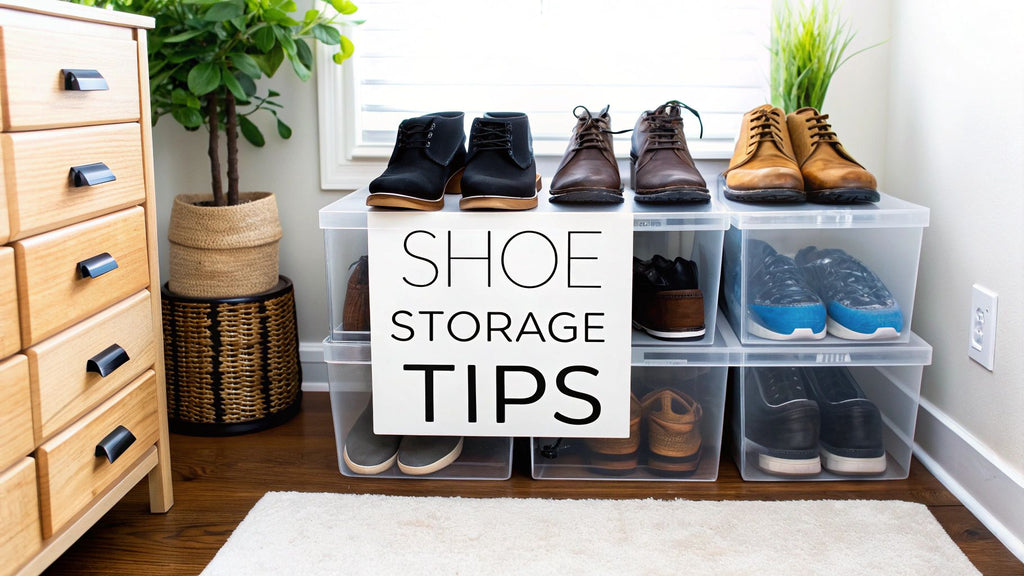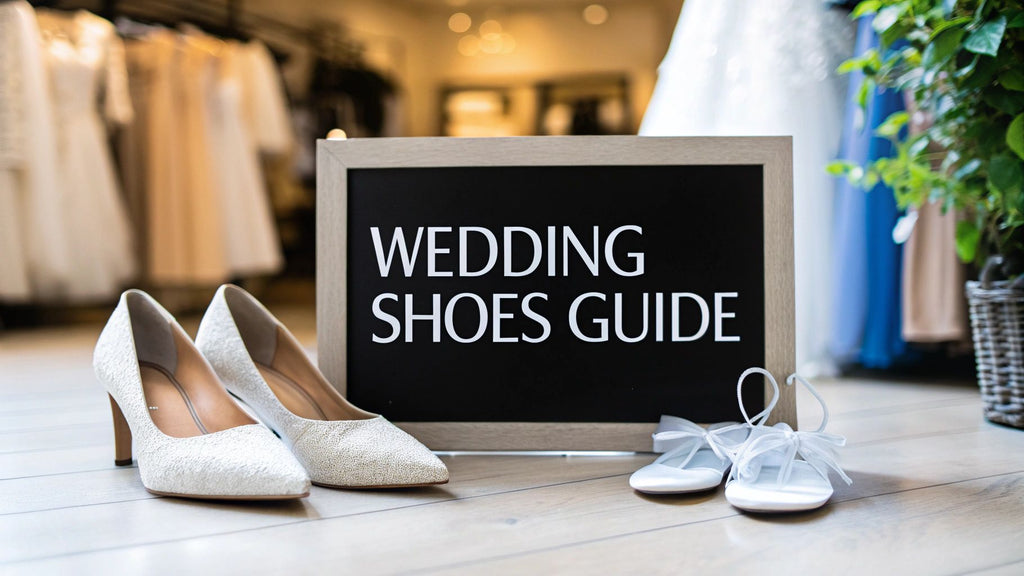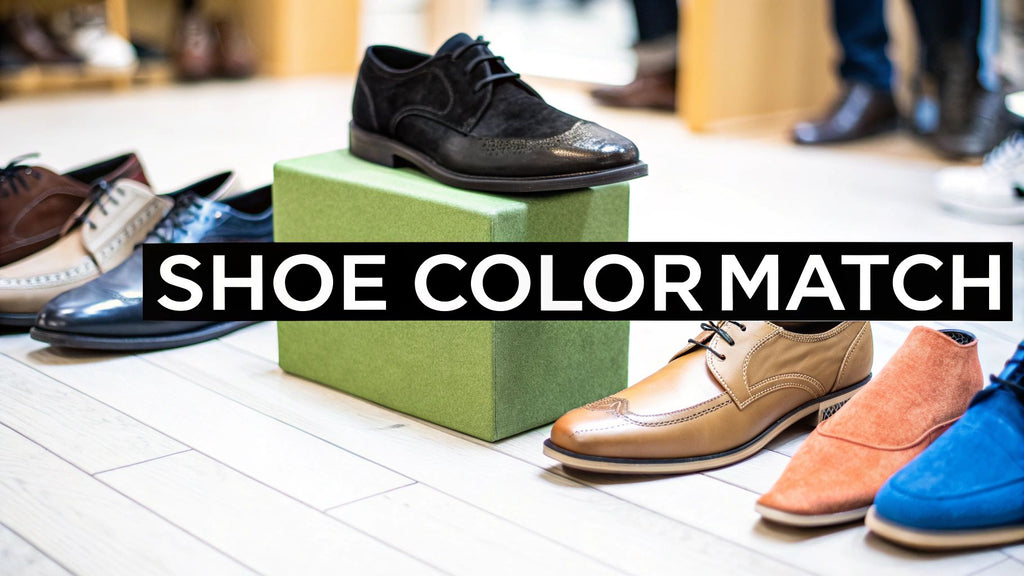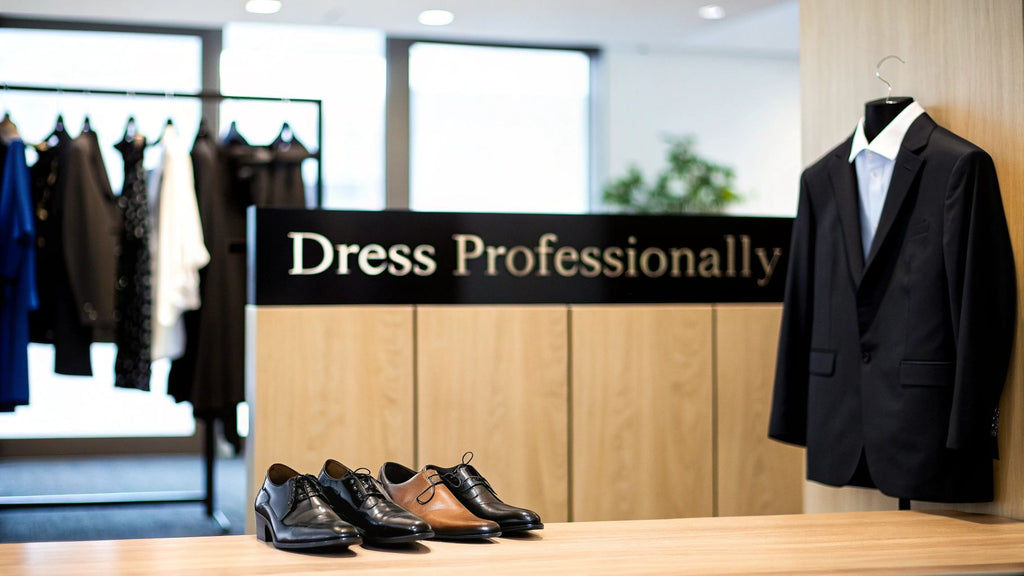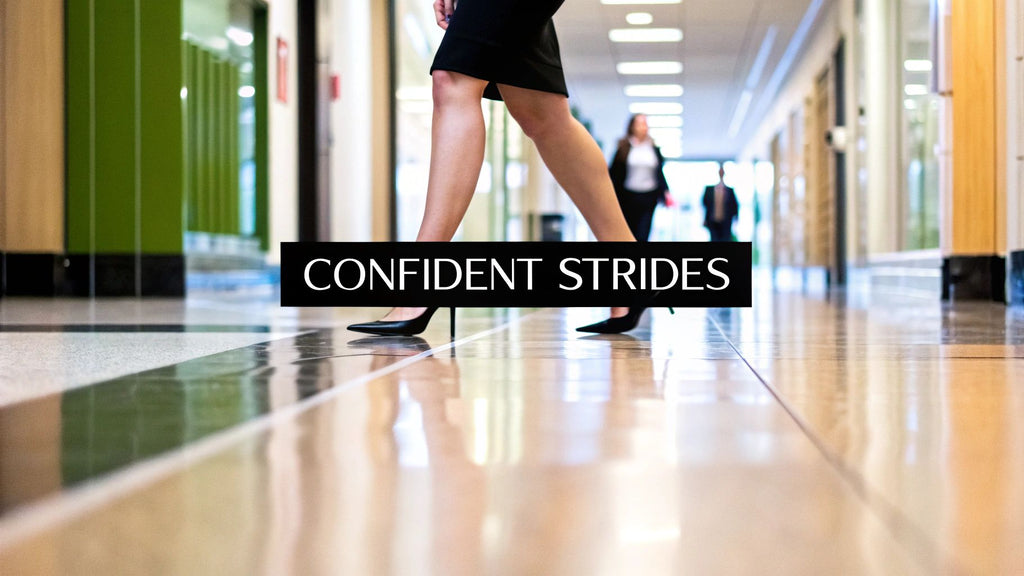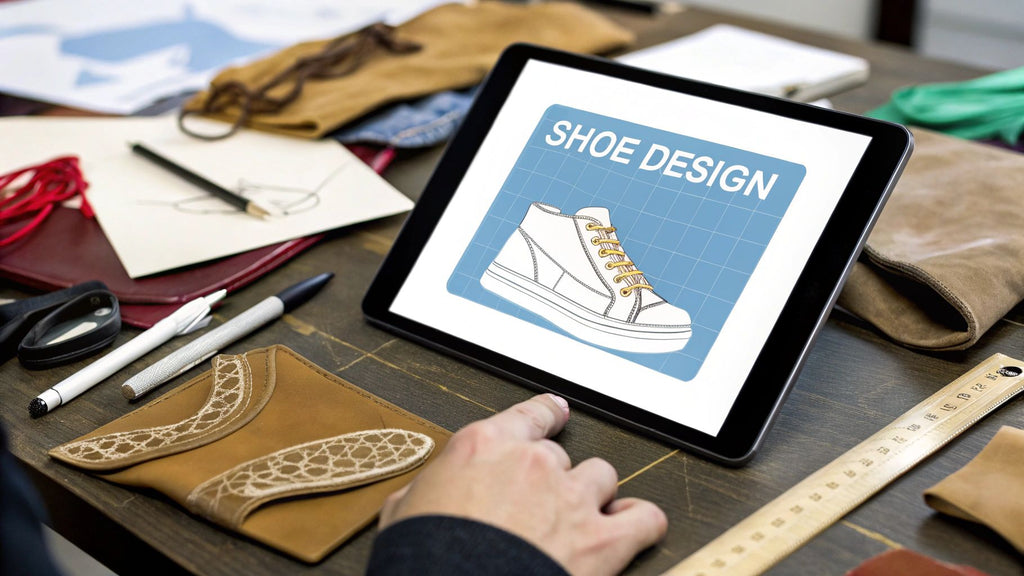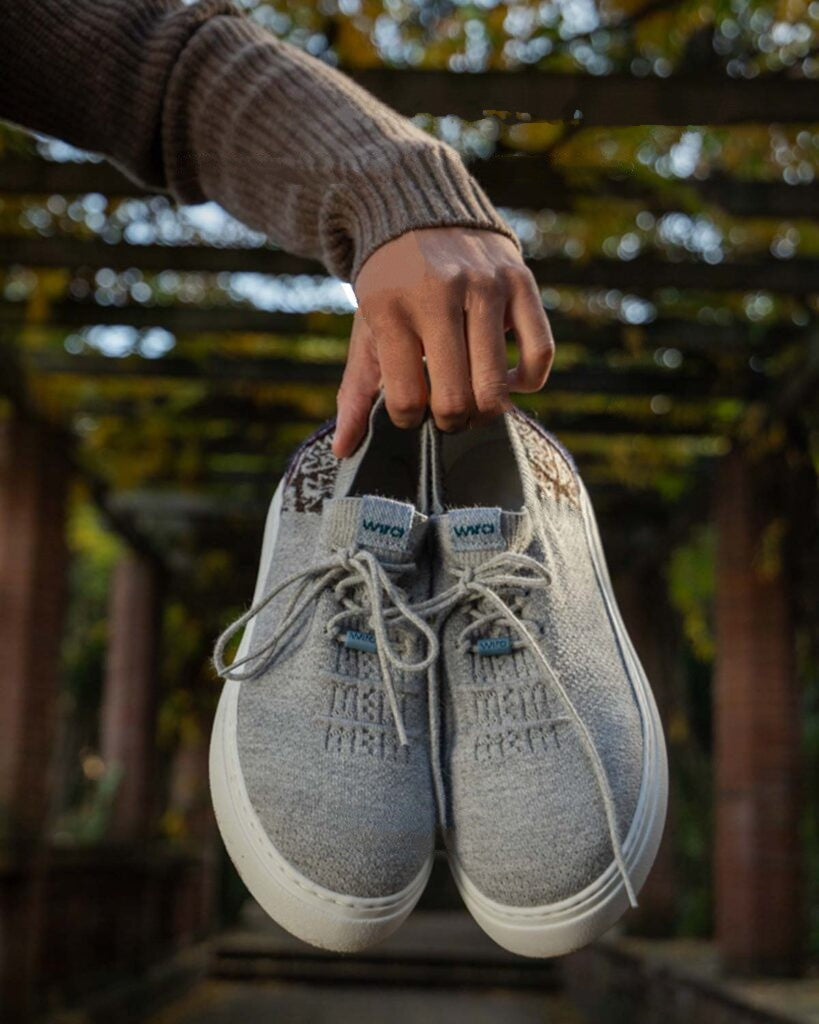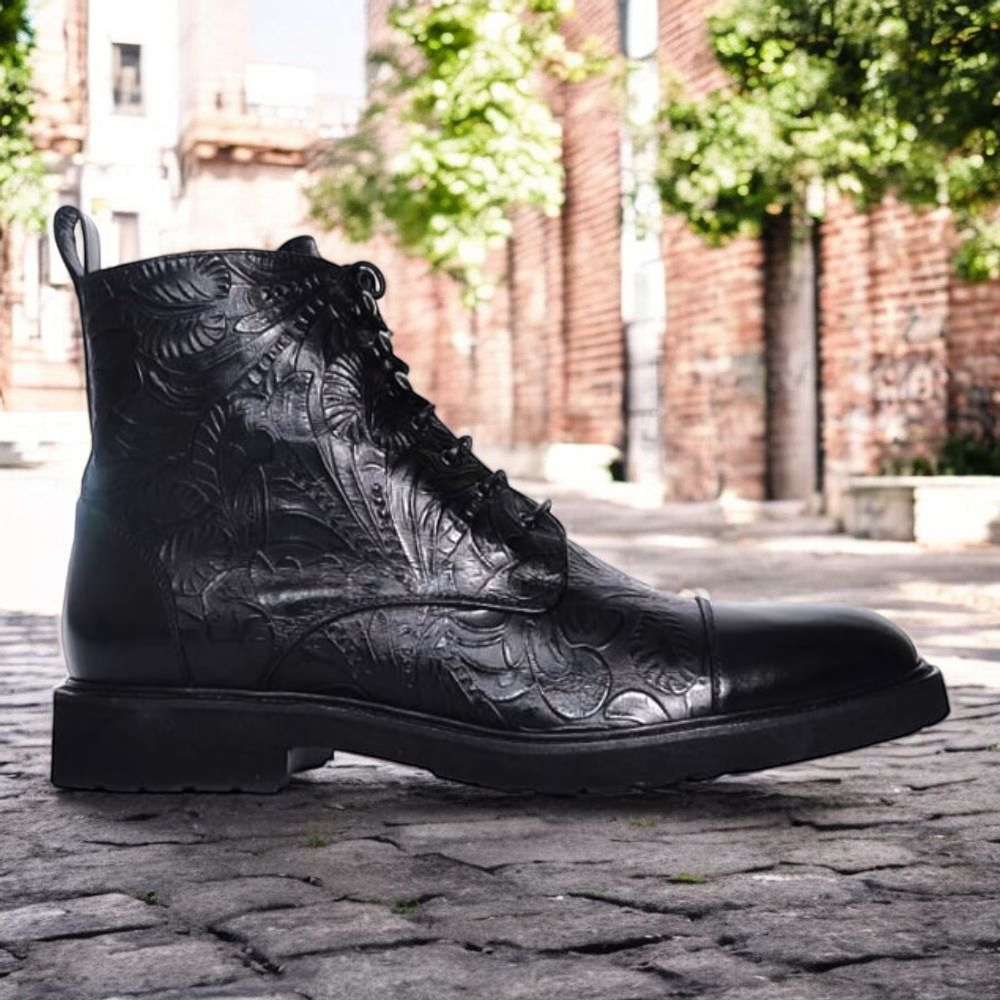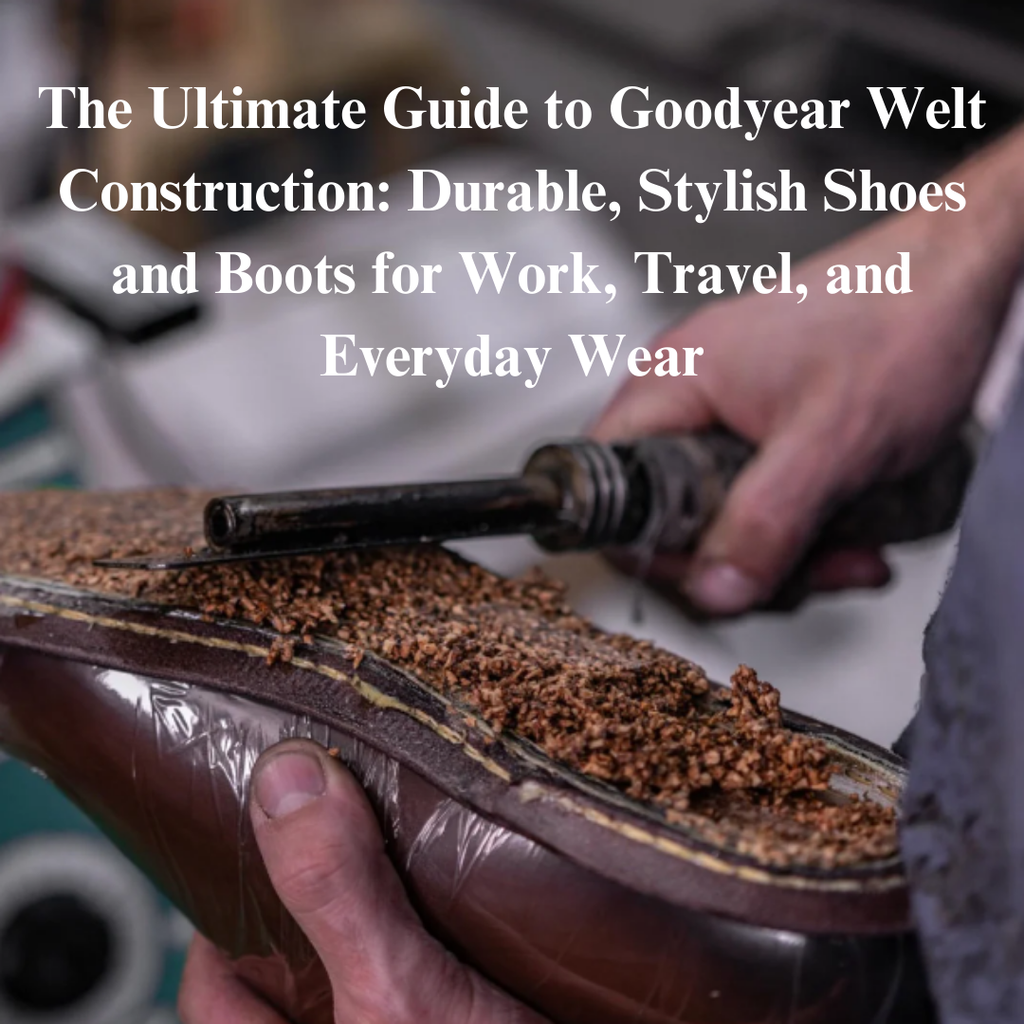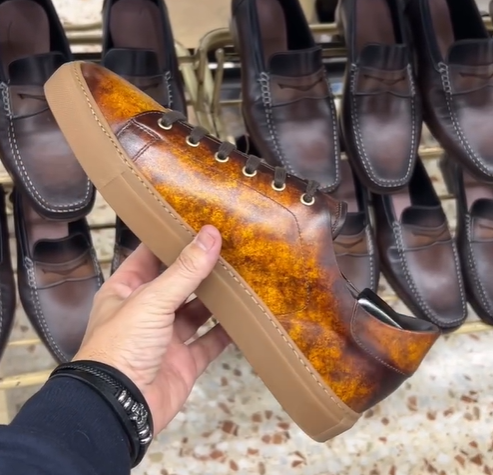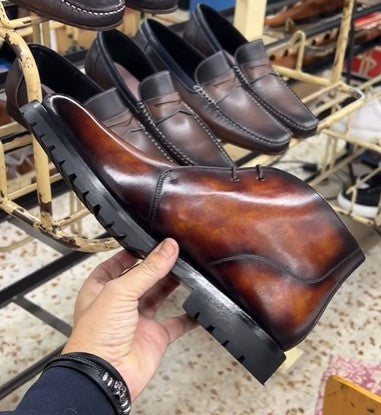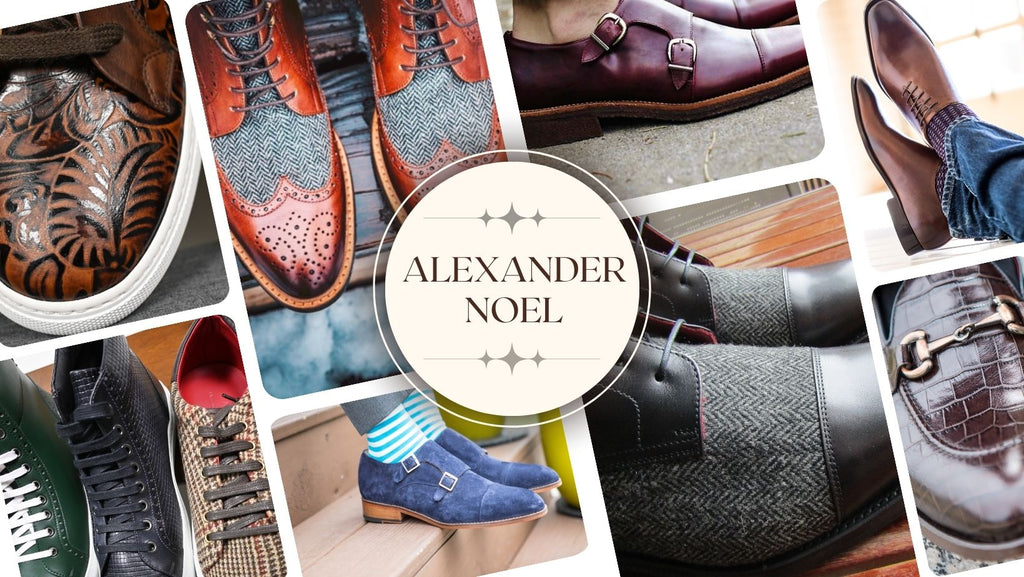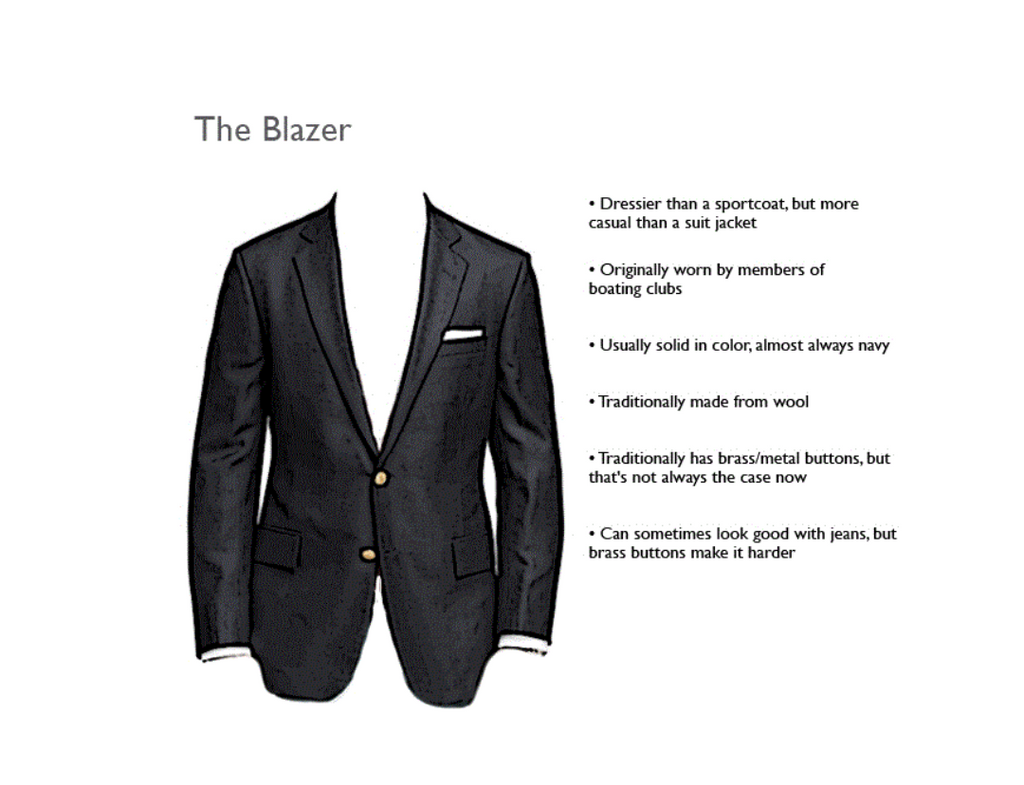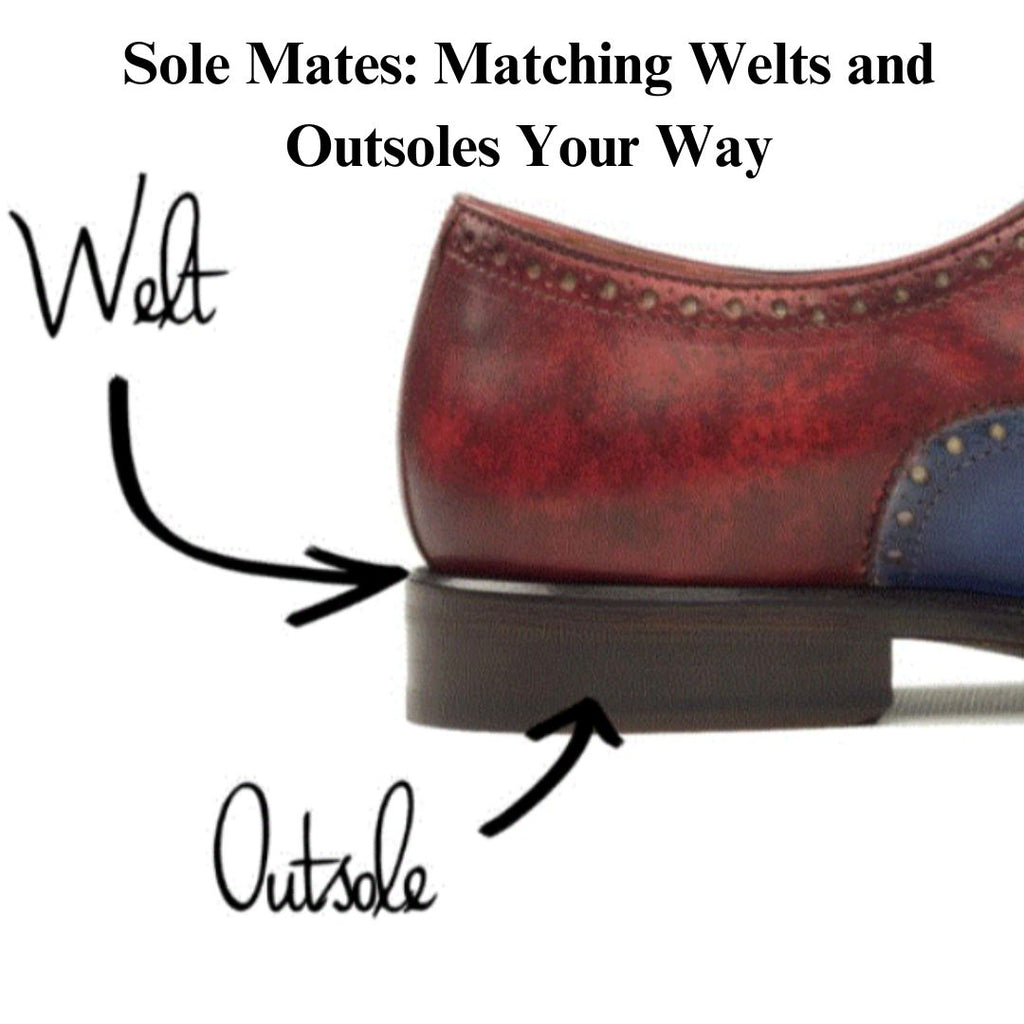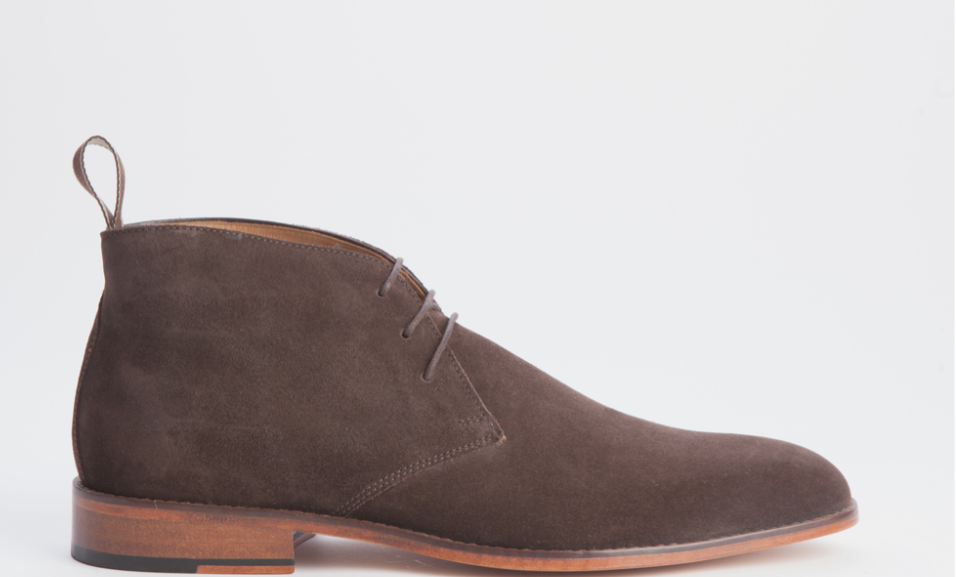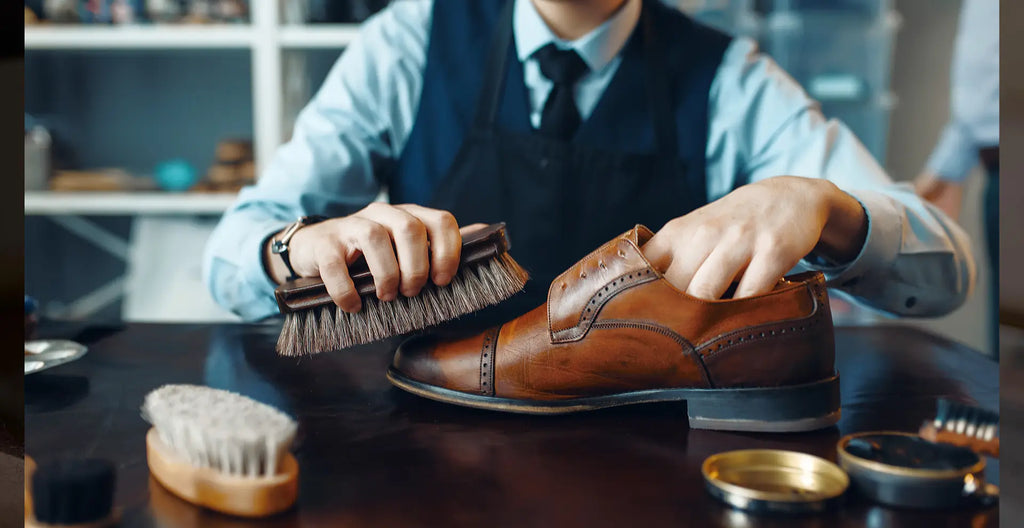
Your Essential Guide to Shoe Care Kits: Buy Today!

When you invest in a pair of shoes handcrafted by global artisans, you're not just buying footwear; you're embracing quality, a perfect fit, and a personal style statement. A dedicated shoe care kit is what protects that investment, ensuring your bespoke shoes don't just last, but actually develop a richer character with age. Think of it as a complete skincare routine for your footwear—a curated collection of brushes, conditioners, and polishes designed to keep premium materials in prime condition.
Why a Shoe Care Kit Is Your Best Investment
Acquiring a pair of beautifully made shoes is just the first step. The true value emerges through careful, consistent maintenance—a ritual that transforms a purchase into a lasting part of your collection. Just as our Design Lab empowers you to customize every detail, a solid shoe care routine lets you cultivate the unique character of your shoes over the years. It's a hands-on process that deepens your appreciation for the traditional craftsmanship that goes into every stitch.
This isn’t just about cleaning; it’s about preservation. Taking a proactive approach with the right tools stops small issues like dryness, scuffs, or dirt from turning into permanent damage. That commitment to upkeep is what separates a shoe that’s in style for a season from one that becomes a timeless staple in your wardrobe.
The Value of Proactive Preservation
Think of your finest leather shoes as a living material. Without proper moisture, they will dry out, crack, and lose the supple feel you invested in. A complete shoe care kit has everything you need to nourish the leather, keeping it healthy and resilient. This goes far beyond aesthetics; it's about extending the functional life of your footwear.
- Prevents Damage: Regular cleaning and conditioning prevent dirt and salt from breaking down leather fibers, which is the primary cause of premature aging and cracking.
- Enhances Appearance: A proper polish and buffing restore the original shine and color, ensuring your shoes always look sharp and reflect your high standards.
- Maintains Comfort and Fit: Using shoe trees (a core part of any comprehensive kit) is crucial. They absorb moisture from the inside and help the shoe maintain its original shape, preserving that perfect, personalized fit.
A well-maintained pair of shoes tells a story of quality and respect. It shows a commitment not just to your own style, but to the artisans who crafted them and the fine materials they chose.
With the growing focus on sustainable fashion and product longevity, proper maintenance has become more important than ever. The global shoe care market was valued at around USD 4.74 billion in 2023 and is on track to hit USD 6.25 billion by 2030. That's a clear signal that discerning individuals worldwide are making the preservation of their footwear a priority. You can discover more insights into the growing shoe care market and see the full research for yourself.
Ultimately, a shoe care kit is an investment in yourself, ensuring that every step you take is a confident one.
Anatomy Of The Perfect Shoe Care Kit
A proper shoe care kit is more than just a box of supplies; it's a complete system. When you understand the why behind each tool, the process evolves from a chore into a satisfying ritual. Think of it as an artisan's toolbox, where every item has a specific and vital role in preserving your footwear.
Assembling the right collection means you’re prepared for anything, from a basic clean-up to a full restoration.

The best approach is layered, moving methodically from cleaning to conditioning and, finally, to polishing. Let's break down the essential components that every complete shoe care kit should have.
Essential Components of a Complete Shoe Care Kit
Here's a detailed breakdown of the fundamental tools and products you'll need for comprehensive shoe care. Each one serves a specific purpose, and choosing quality materials makes all the difference.
| Component | Primary Function | Best For | Pro Tip |
|---|---|---|---|
| Horsehair Brush | Cleaning & Buffing | All smooth leather types | Use one brush for cleaning (dark) and another for buffing (light) to avoid color contamination. |
| Welt Brush | Deep Cleaning | Goodyear-welted shoes, brogues | Its stiff bristles get into the hard-to-reach seam between the upper and the sole where dirt hides. |
| Leather Conditioner | Moisturizing & Nourishing | Calfskin, full-grain leather | Apply a thin, even layer. Over-conditioning can oversaturate the leather and clog its pores. |
| Cream Polish | Color Restoration | Scuffed or faded leather | A cream’s high pigment content is perfect for restoring color vibrancy and covering minor blemishes. |
| Wax Polish | Shine & Protection | Toe caps, heels | Creates a hard, water-resistant shell. This is the key to achieving a mirror shine. |
| Dauber Brush | Polish Application | All smooth leather types | Helps apply polish evenly without getting it all over your hands or the shoe's lining. |
| Shine Cloth | Final Buffing | All polished shoes | A soft, lint-free cotton cloth is essential for bringing out the final high-gloss luster. |
Mastering these components gives you the power to keep your shoes looking their absolute best, ensuring they last for years.
The Foundation: Cleaning Tools
The first step, always, is to get the shoes clean. It's a common mistake to rush this part, but polishing over dirt just grinds those abrasive particles into the leather. That's what causes micro-scratches and dulls the finish over time.
Think of it like preparing a canvas for a painting—you need a perfectly clean surface for a flawless result.
- Horsehair Brush: This is the undisputed workhorse of any kit. Its natural fibers are tough enough to flick away dust and grime but soft enough not to scratch delicate leather. You'll use it for the initial clean and again at the very end to buff your polish to a beautiful, soft luster.
- Welt Brush: This small, stiff brush is often overlooked, but it’s absolutely critical. It’s designed specifically to clean the welt—that narrow strip where the shoe’s upper meets the sole. This area is a magnet for dirt and moisture, which can weaken the stitching over time.
The Nourishment: Conditioning
With the surface clean, it's time to put moisture back into the leather. Leather is a skin, after all. If it dries out, it gets brittle and will eventually crack. A quality conditioner is the essential nourishment that keeps the material supple, resilient, and feeling great.
Neglecting conditioning is probably the single biggest mistake in shoe care. Polishing makes a shoe look good today, but conditioning ensures it will still be around to wear years from now.
Apply your leather conditioner with a soft, lint-free cloth, using small, circular motions to help it penetrate the pores. Give the shoes at least 20 minutes to absorb it fully before you even think about reaching for the polish.
The Finish: Polishes and Creams
Now for the final touch. With the leather clean and nourished, it's time to restore color and add a protective layer. This is where you'll use polishes and creams, and knowing the difference is key to getting that professional finish. We dive even deeper into this in our ultimate shoe care guide from Alexander Shoe Store.
- Cream Polish: Think of cream for color restoration and light conditioning. It has a lot more pigment and nourishing oils than wax. Use a cream to cover up small scuffs, even out the color, and add another layer of moisture.
- Wax Polish: Wax is all about protection and high shine. It creates a hard barrier on the surface that repels water and prevents new scuffs. While it has less pigment, wax is what you need to achieve that coveted "mirror" shine.
A small dauber brush is the perfect tool for applying both. Its round head gives you precise control, so you can get an even coat without making a mess. By mastering these fundamentals, you’re building the foundation for expert-level shoe care.
Choosing the Right Kit for Your Footwear
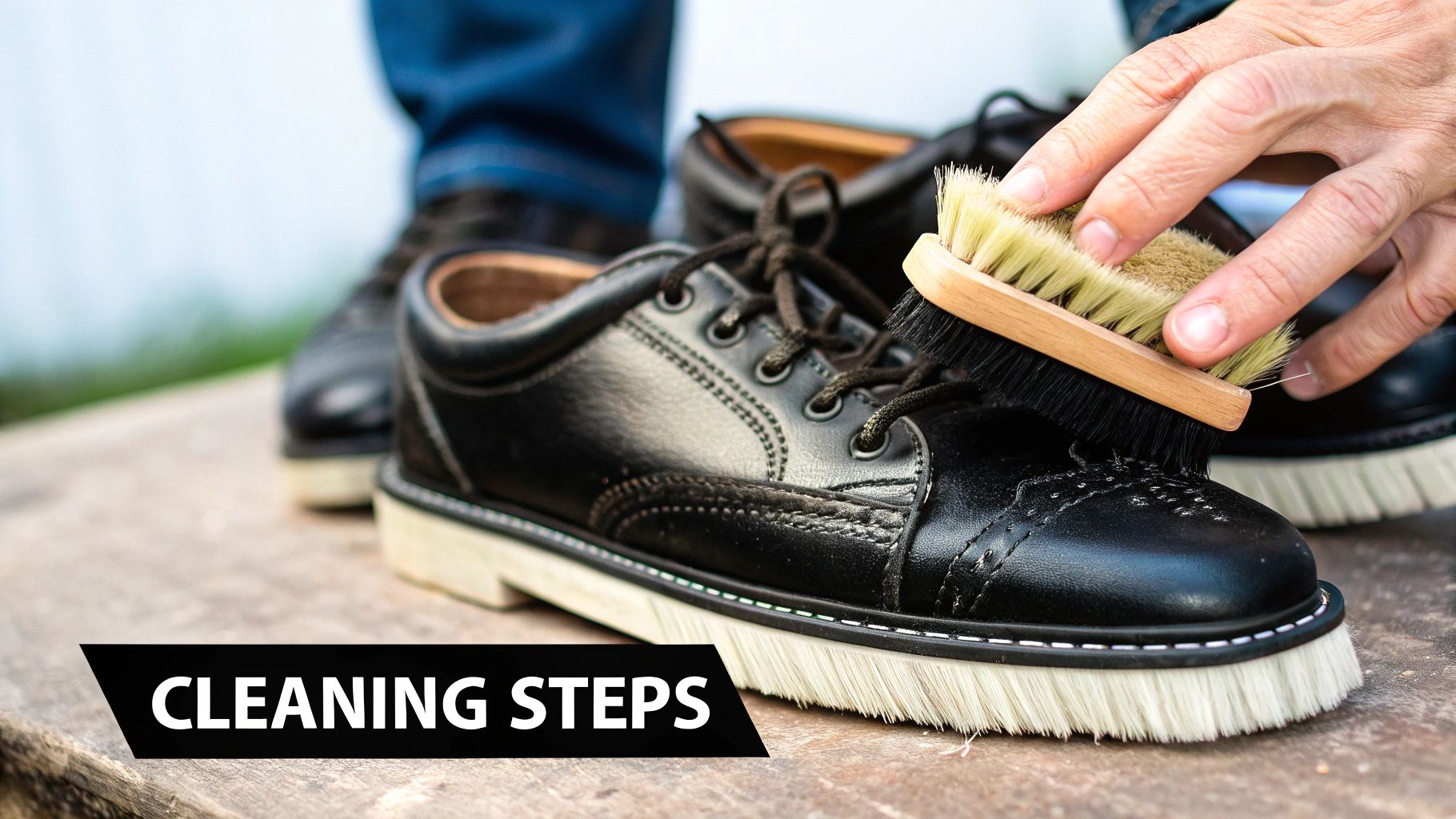
Every shoe collection is a reflection of personal style, featuring everything from classic calfskin to modern luxury textiles. You wouldn't use the same cleaning product on a silk shirt and a denim jacket, right? The same logic applies to your footwear.
Picking the right shoe care kits and products for each specific material is the real secret to making every pair last and look fantastic. This is about understanding what each material needs to thrive. A heavy wax polish that gives a mirror shine to a cap-toe oxford would absolutely destroy the delicate nap of a suede loafer. This tailored, educational approach ensures the unique character of every shoe—from a bespoke dress shoe to a pair of our WIRA luxury sneakers—is preserved for years to come.
Kits for Smooth and Full-Grain Leather
This is the workhorse of the shoe world, prized for its toughness and its ability to develop a gorgeous patina over time. A proper care kit here revolves around the timeless three-step ritual: clean, condition, and polish. This is the cornerstone of any serious shoe care collection.
For smooth leathers like calfskin or full-grain, a high-quality leather conditioner is completely non-negotiable. It sinks into the hide to replenish the natural oils, keeping it flexible and preventing the tiny cracks that come from dryness and daily wear.
A solid smooth leather kit should have:
- A horsehair brush: Essential for getting rid of surface dirt before you start and for buffing to a final shine.
- A gentle leather cleaner or soap: You need something that can lift grime without stripping away the leather's essential moisture.
- A premium leather conditioner: This is what "feeds" the leather and keeps it from drying out.
- Cream and wax polishes: Use colored creams to restore pigment and wax to create that protective, high-gloss finish.
The goal with smooth leather is not just to clean it, but to feed it. A well-conditioned shoe is more resilient, comfortable, and develops a richer, deeper character that is impossible to replicate with shortcuts.
Special Considerations for Suede and Nubuck
Everyone loves the soft, velvety texture of suede and nubuck, but that delicate surface—the "nap"—is a magnet for stains, water spots, and matting. The care kit for these materials is a world away from what you'd use on smooth leather. Forget polish; the name of the game here is dry cleaning and protecting that unique texture.
Applying water-based cleaners or wax is the fastest way to ruin a good pair of suede shoes. Instead, you need specialized tools designed to lift stains and fluff up the nap without causing any damage.
Your essential suede and nubuck kit requires:
- A dedicated suede brush: These usually have two sides—soft bristles (nylon or brass) for lifting dirt and a rubber or crepe section for restoring the nap's texture.
- A suede eraser: It works just like a pencil eraser, allowing you to gently rub away small, dry stains and scuffs.
- Specialized suede cleaner: For tougher jobs, a foam or spray cleaner made specifically for suede won't oversaturate and stain the material.
- A protective spray: A quality protector spray is your best defense. It creates an invisible barrier against water and oil, making it the most crucial preventive tool you can own.
For a tough grease stain, a little cornstarch can be a lifesaver. Just sprinkle it on the spot, let it sit for a few hours to soak up the oil, and then brush it away. It’s a gentle trick that can rescue a pair you thought was a lost cause.
Care for Premium and Luxury Sneakers
Modern luxury sneakers, like those you can create in our Design Lab, are often a mix of materials—fine leather, suede panels, and technical fabrics all on one shoe. This innovative construction demands a versatile care kit. The main goal is to clean effectively without discoloring or damaging any of the different surfaces.
The biggest enemy of a fresh pair of sneakers is the slow buildup of dirt, especially on the midsole and in the fabric's weave. The best approach is to be proactive.
A well-stocked sneaker care kit includes:
- A soft-bristle brush: You'll want something softer than a standard horsehair brush to be safe on delicate uppers and knit fabrics.
- A high-quality cleaning solution: Look for a pH-neutral cleaner that’s safe to use on leather, suede, canvas, and rubber.
- A microfiber towel: The perfect tool for wiping away suds and dirt without leaving any lint behind.
- Midsole cleaner: There are specific products out there that work wonders on removing stubborn scuffs from foam or rubber soles.
For day-to-day upkeep, a quick dry-brushing after each wear is your best friend. It takes just a minute to knock off any fresh dust and dirt before it has a chance to set in, meaning you'll have to do a deep clean far less often. This simple habit can easily double the fresh look of your favorite pair.
Mastering Your Shoe Care Ritual Step-by-Step
Think of shoe maintenance less as a chore and more as a rewarding practice. It’s a moment to connect with the incredible craftsmanship of your footwear. This isn’t just about cleaning; it’s a deliberate ritual that preserves the integrity, beauty, and story of each pair you own. Using your shoe care kits like a seasoned pro is much easier than you might think.
We can break the entire process down into four distinct, totally manageable stages. By following these steps, you'll give every pair—from your custom stilettos to those rugged, handcrafted boots—the expert-level care they deserve, extending their life and enriching their character along the way.
Stage 1: The Foundation of Cleaning
Before a drop of conditioner or polish touches your shoes, you must start with a perfectly clean surface. Applying products over dirt is like painting a wall without priming it first. You'll just trap all that grime against the leather, which can cause microscopic scratches that dull the finish over time.
First things first: remove the laces. This gives you full access to every part of the shoe, especially the tongue and eyelets. Next, slide in your cedar shoe trees. This is a crucial step that helps the shoe hold its natural shape during the cleaning process and stops creases from getting worse while you work.
With the shoe prepped, grab your horsehair brush. Use firm, sweeping strokes to knock off all the loose surface dirt, dust, and anything else clinging to the leather. Pay close attention to the welt—that seam where the upper meets the sole. It's a notorious trap for grime that can degrade the stitching if left alone.
Stage 2: The Art of Conditioning
Once the leather is clean, it’s time to nourish it. Leather is a natural skin, and just like ours, it needs moisture to stay supple, strong, and resilient. Conditioning replenishes the essential oils that get lost from exposure to the elements, stopping dryness and cracking before they start.
This is single-handedly the most vital step for the long-term health of your footwear. A well-conditioned shoe doesn't just look better; it's also more comfortable and far more durable. You're investing in the future of your shoes.
Here's how to apply conditioner like a pro:
- Use a clean, soft cloth, like a simple cotton or microfiber one.
- Apply a small, pea-sized amount of conditioner to the cloth, not directly onto the shoe. This prevents soaking one spot.
- Work the conditioner into the leather using small, gentle, circular motions. A thin, even layer is always more effective than a thick one.
- Let the shoes rest for at least 20-30 minutes. This gives the leather enough time to fully absorb all those nourishing oils.
Stage 3: The Technique of Polishing
Polishing is where the magic really happens. This stage does two things: it restores color and creates a protective, high-gloss shine. The key is knowing the difference between cream and wax polishes and when to use each one.
A cream polish is rich in pigment and contains nourishing oils, making it perfect for covering minor scuffs and bringing back the shoe’s original color depth. A wax polish, on the other hand, creates a hard, protective barrier on the surface, giving you that coveted mirror shine while helping to repel water and dirt.
The secret to a professional shine isn't about how much polish you pile on, but how you apply it. Less is always more. A thin, even application lets you build layers for a deeper, more durable luster.
Use a dauber brush or a clean cloth wrapped around your fingers to apply a very thin layer of polish across the entire shoe. If you're going for a high shine, focus your efforts on the toe cap and heel counter. These areas have structural reinforcement, so they won't flex and crack the polish. For a more detailed walkthrough on different leathers, our guide on how to clean leather boots has even more expert tips.
Stage 4: The Final Step of Protection
The final stage is all about buffing and protecting your hard work. After letting the polish dry for about 10 minutes, it’s time to bring out the shine. Take a clean horsehair brush—ideally a different one from your cleaning brush—and buff the whole shoe with quick, side-to-side strokes. The friction and heat you generate will melt the wax and create a beautiful, warm glow.
For those who want to take it to the next level, this is where the "spit shine" technique comes in.
- Wrap a clean shine cloth tightly around your index and middle fingers.
- Apply a tiny dab of wax polish to the cloth.
- Add a single drop of water to the shoe’s toe cap.
- Buff the area in rapid, small circles until the water vanishes and a glossy, glass-like finish appears. Repeat this process, building thin layers until you get that perfect mirror shine you're looking for.
When you perform this four-stage ritual regularly, you're doing more than just keeping your shoes looking brand new. You’re building a connection to the quality and craftsmanship of your investment, making sure your bespoke footwear tells a story of care and distinction for years to come.
Advanced Care and Common Mistakes to Avoid
Once you've nailed the basics of your shoe care ritual, it's time to level up. Truly preserving bespoke footwear isn't just about routine maintenance; it's about knowing how to handle specialized issues and sidestep common pitfalls that can ruin a beautiful pair of shoes.
Think of it as moving from a shoe owner to a shoe custodian. Knowing how to tackle minor scuffs or remove stubborn salt stains is just as crucial as a perfect polish. This is the knowledge that protects your investment and maintains the integrity of the materials our global artisans so carefully chose for your custom designs.
Handling Specialized Care Scenarios
Life happens. Whether it's a sudden downpour, a clumsy spill, or the harsh realities of a salted winter sidewalk, certain situations demand more than a standard clean and polish. You need a targeted game plan to avoid permanent damage.
Here are a few advanced techniques to add to your skillset:
- Removing Salt Stains: Don't panic. Just mix a simple solution of two parts water and one part white vinegar. Dampen a clean cloth with it, gently dab the stained areas to lift the white residue, and let the shoes air dry completely before you even think about conditioning them.
- Repairing Minor Scuffs: For light scuffs on smooth leather, a good colored cream polish is your secret weapon. Its high pigment content will fill in the scuff and blend the color almost invisibly. Apply a tiny amount with a cloth, let it dry, and then buff gently.
- Seasonal Storage: Before you put your shoes away for the season, give them a full cleaning and conditioning treatment. Then, slide in a pair of unfinished cedar shoe trees—they'll maintain the shape and absorb any moisture. Finally, tuck them into breathable dust bags, away from direct sunlight and heat.

The Most Common Mistakes and How to Sidestep Them
Knowing what not to do is just as important as knowing what to do. So many well-intentioned shoe lovers cause irreversible harm by making a few common, easily avoided errors. North America's shoe care market, which accounted for about 44.25% of global revenue in 2024, is built on products that help fix and prevent these very issues. You can read the full market analysis on shoe care trends to get a sense of how big this is.
Here’s a quick guide to the most frequent missteps:
- Over-Polishing: More is not better. Applying too much wax polish too often builds up a thick, cloudy layer that seals the leather and prevents it from breathing. Underneath that shell, the leather can dry out and crack. Stick to a full polish only every 4-6 weeks.
- Using Harsh Cleaners: Never, ever reach for household cleaners, alcohol, or soaps that aren't specifically made for leather. These products will strip the natural oils and pigments right out of the hide, leaving you with discolored, brittle shoes.
- Improper Drying Methods: If your shoes get soaked, resist the temptation to put them near a heater or radiator. Direct heat is leather's worst enemy; it can shrink, warp, and crack it beyond repair. The right way? Stuff them with newspaper and let them air dry naturally at room temperature.
The most beautiful footwear develops character over time, not from neglect. Techniques like building a rich, nuanced finish are part of this journey. You can explore the art of handmade patina to understand how intentional care creates depth and beauty.
Common Questions About Shoe Care Kits

Even after you get the basics down, you’ll probably have some questions when you start caring for your own collection. Getting clear answers is how you build confidence and turn maintenance from a chore into a satisfying ritual. Here, we tackle the most common questions we get, giving you the expert guidance needed to get the most out of your shoe care kits.
Think of this as your personal reference guide. The goal is simple: to demystify the process and help you protect the investment you’ve made in beautifully crafted, bespoke footwear.
How Often Should I Use My Shoe Care Kit?
The right answer depends entirely on how often you wear your shoes and what they go through. This isn't about sticking to a rigid calendar; it's about paying attention to what your footwear needs. Being proactive is always better than being reactive.
If you wear a pair two or three times a week around the city, a quick wipe-down after each wear is a great habit. For a deeper clean, conditioning, and polish, aim for every 4-6 weeks. This keeps the leather properly nourished and protected.
However, if your shoes get hit with rain, snow, or salt, they need immediate attention. Clean them as soon as you can to stop moisture and chemicals from setting in and causing real damage.
Can One Kit Work for All My Different Shoes?
It's a tempting idea, but a single kit rarely covers all the bases for a varied shoe collection. Just like our Design Lab lets you personalize every detail of your shoe, your care routine has to be tailored to the specific materials in your closet.
Core tools like brushes and cloths can be shared, but always use separate sets for light and dark polishes to avoid messy color transfer. The products themselves, though, are where it gets specific.
- Smooth Leather: Your standard kit with a good conditioner and wax polish is perfect here.
- Suede or Nubuck: These delicate materials need their own tools—special erasers, non-wax formulas, and dedicated brushes to keep their soft texture intact.
- Patent Leather: This requires a specific cleaner to maintain that signature high-gloss finish without making it cloudy.
The best approach is to start with a quality kit for your most-worn pair and then add specific products for the other materials you own.
What Is the Most Important Item in a Shoe Care Kit?
Every piece in a good shoe care kit plays its part, but a couple of items are absolutely non-negotiable for preserving the life and shape of your shoes. If we had to pick the most essential, it would be a dead heat between two critical tools.
First, cedar shoe trees are a must. They’re not just for show. Unfinished cedar pulls damaging moisture and odor out of the leather from the inside. More importantly, they help the shoe hold its original shape, preventing those deep, permanent creases from forming.
A quality leather conditioner is just as vital. Think of it as life support for your shoes. It restores the natural oils in the leather, keeping it supple and flexible, which is your best defense against cracking. Without these two, the lifespan of even the finest handcrafted shoes will be cut drastically short.
These items are the foundation of any real preservation strategy. If you have more detailed questions about specific products or techniques, we've put together a comprehensive list of answers. You can explore our FAQ page for more insights on everything from sizing to material care. Ultimately, the best kit is the one that meets the unique needs of your collection, ensuring every pair remains a testament to timeless style.
Your journey into bespoke footwear deserves a care routine to match. At Alexander Noel, we provide the tools and knowledge to protect your investment, ensuring every custom-designed pair ages with grace and distinction. Explore our collection and start designing your own handcrafted shoes today.


